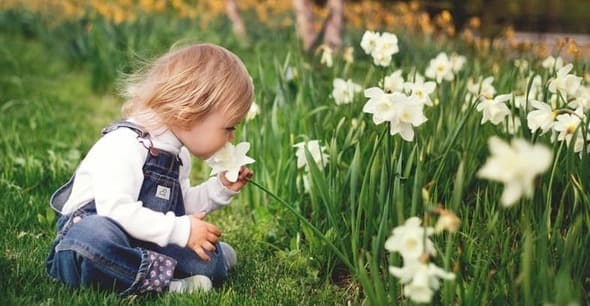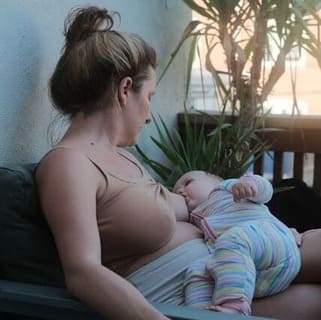Cultivating Curiosity Through Playful Learning Activities
That constant stream of “why?” questions from your preschooler isn’t just a test of your patience- it’s a powerful sign of a rapidly developing brain. Curiosity is the engine of learning, and as parents, we have a front-row seat to this incredible process. But in the busyness of daily life, it’s easy to wonder: How can I best nurture this natural inquisitiveness?
The good news is that you don’t need fancy toys or a teaching degree. Cultivating curiosity is about creating an environment where exploration, questioning, and a little bit of mess are not just allowed, but celebrated. This post will guide you through simple, evidence-aware activities to turn everyday moments into opportunities for discovery.

Fast Facts: The Power of Preschool Curiosity
Curiosity is more than just a personality trait; it’s a cognitive tool. When a child is curious, their brain is primed to learn and retain information more effectively.
-
Defining Curiosity: In early childhood, curiosity is the drive to explore, investigate, and understand the unknown. It’s what motivates a child to peek under a rock, mix paints, or ask what makes the moon shine.
-
A Stat to Consider: Research from the University of California found that when curiosity is piqued, the brain shows increased activity in the hippocampus, a region critical for forming new memories. This means curious children aren’t just having fun- they’re building better memories.
-
The Lifelong Impact: A study published in Pediatric Research suggests that fostering curiosity in the preschool years is linked to greater academic motivation and achievement later on.
“Curiosity is the wick in the candle of learning.” - William Arthur Ward
The Curious Brain: What’s Happening in There?
What Parents Need to Know
Your preschooler’s brain is making millions of neural connections every second. Curiosity is the catalyst that strengthens these pathways. When your child encounters something new and interesting, their brain releases dopamine, the “feel-good” chemical. This creates a positive feedback loop: seeking answers feels good, which motivates them to seek more answers. It’s a beautiful, self-perpetuating cycle of learning.
What to Watch For (Ages 3-5)
Curiosity looks different for every child, but there are common signs:
-
Verbal Exploration: The classic “why,” “how,” and “what if” questions become a constant part of your dialogue.
-
Physical Investigation: Taking toys apart, digging in the dirt, pouring water between cups- this is hands-on science.
-
Observation: Noticing small details you might miss, like a bug on the sidewalk or a new crack in the wall.
-
Pretend Play: Creating elaborate scenarios where they can explore different roles, rules, and possibilities.
What to Do
-
Follow Their Lead: When they show interest in a puddle, don’t rush past. Stop and explore it with them. Your attention validates their curiosity.
-
Become a “Why” Partner: Instead of always providing the answer, turn the question back. “That’s a great question. Why do you think the leaves change color?”
-
Normalize “I Don’t Know”: It’s perfectly okay not to have all the answers. This models intellectual humility and shows that learning is a lifelong process. You can say, “I’m not sure. Let’s find out together!”
Curiosity in Action: Play-Based Learning Activities
The best activities are open-ended, sensory-rich, and led by the child’s interests. Here are a few low-friction ideas that require minimal setup.
What Parents Need to Know
Play is a preschooler’s work. Through play, they learn physics, social skills, cause and effect, and problem-solving. Structured activities have their place, but unstructured, child-led play is where curiosity truly thrives.
What to Watch For
Notice what captures your child’s attention. Are they constantly building? Drawn to animals? Fascinated by how things work? Use these innate interests as a springboard for activities.
What to Do: Simple Activity Ideas
-
The Mystery Bag: Place a familiar but interesting object (a pinecone, a large spoon, a hairbrush) inside a cloth bag. Let your child reach in and feel it without looking. Ask them to describe what they feel. Is it hard? Soft? Bumpy? This sharpens observational skills and vocabulary.
-
Nature Scavenger Hunt: Go on a walk with a simple list: find something smooth, something rough, something green, and something that makes a sound. This encourages focused observation of their environment.
-
Sink or Float?: A classic for a reason. Fill a tub with water and provide a collection of household items (a cork, a rock, a metal spoon, a plastic toy). Let them hypothesize and test each one. This is the scientific method in its simplest form.
-
“What’s Missing?” Tray Game: Place 4-5 small items on a tray. Let your child study them for 30 seconds. Then, have them close their eyes while you remove one item. Can they figure out what’s missing? This builds memory and attention to detail.
Creating a Curiosity-Friendly Home Environment
You don’t need to transform your entire house into a Montessori classroom. Small shifts can make a big difference in encouraging independent exploration.
What Parents Need to Know
An environment that fosters curiosity is one that is safe, responsive, and rich with possibilities. It’s less about the space and more about the atmosphere you create- one where questions are welcomed and mistakes are seen as learning opportunities.
What to Watch For
Are there areas of your home your child avoids? Are they constantly being told “no” or “don’t touch”? These might be spots where you can make simple adjustments to invite more interaction.
What to Do
Create “Yes” Spaces: Designate at least one low shelf or cabinet with accessible, rotating toys and materials (e.g., blocks, puzzles, art supplies). This gives them autonomy to choose their own activities.
-
Embrace Sensory Play (Safely): Set up a small bin for sensory materials like dried beans, rice, or water beads (with close supervision for children who still mouth objects). Add cups, funnels, and spoons for endless experimentation.
-
Display Interesting Items: A basket of interesting stones, a magnifying glass, or a prism in the window can spark unexpected questions and investigations.
-
Reduce Screen Clutter: While high-quality media has its place, passive screen time can crowd out the mental space needed for self-directed curiosity. Aim for balance. For more on creating healthy media habits, explore our guide on managing screen time for young children.
The goal isn’t to have all the answers, but to create a home where asking questions is a celebrated habit.
When to Step Back and When to Seek Help
Safety & When to Seek Professional Guidance
While we want to encourage exploration, safety is the non-negotiable foundation. Always supervise activities with small parts, water, or potential hazards.
It’s also helpful to know when a lack of curiosity might warrant a conversation with your pediatrician. Consider seeking professional advice if by age 4, your child:
-
Rarely asks questions about how things work or why things happen.
-
Shows persistent and consistent lack of interest in new toys, people, or environments.
-
Does not engage in any pretend play.
-
Has significant difficulty with changes in routine or trying new foods to an extent that limits their daily experiences.
These can be typical variations in temperament, but discussing them with your pediatrician can provide peace of mind or early support if needed. Remember, you know your child best.
Gentle Corrections: Common Misconceptions About Curiosity
Misconception 1: “I have to be an expert and answer every question correctly.”
Gentle Correction: Your role is not the “answer machine” but the “co-investigator.” Saying “Let’s find out together” is more powerful than a perfect answer because it models how to learn.
Misconception 2: “Curiosity means my child should be constantly busy with structured activities.”
Gentle Correction: Boredom is a powerful catalyst for curiosity. When a child is bored, they are forced to look inward and around them to create their own entertainment, which fuels imagination and self-discovery.
Misconception 3: “A messy activity is a failed activity.”
Gentle Correction: Mess is often a visible sign of active learning and experimentation. Containing the mess (with a drop cloth or a designated area) is more practical than preventing it.
Scripts for Sparking Curiosity
Sometimes, all it takes is a slight shift in language. Here are a few phrases to keep in your back pocket:
-
Instead of “Be careful,” try “What’s your plan for climbing that?”
-
Instead of “That’s a beautiful painting,” try “Tell me about your painting. I see you used a lot of blue!”
-
Instead of “Don’t get dirty,” try “We have our play clothes on for getting messy!”
-
When they ask “Why?” try “What do you think?”

Your Next Small Step
You are already your child’s first and best teacher. By simply paying attention to their questions and sharing in their wonder, you are doing the most important work.
This week, pick just one of the small ideas from this post. Maybe it’s asking “what do you think?” instead of providing an answer, or setting up the sink-or-float activity during bath time. You don’t need to do it all. Just take one small step to lean into the “why?” and watch the magic of curiosity unfold.
References:
-
Gruber, M. J., Gelman, B. D., & Ranganath, C. (2014). States of Curiosity Modulate Hippocampus-Dependent Learning via the Dopaminergic Circuit. Neuron.
-
Shah, P. E., et al. (2018). Early childhood curiosity and kindergarten reading and math academic achievement. Pediatric Research.
-
American Academy of Pediatrics. (2018). The Power of Play: A Pediatric Role in Enhancing Development in Young Children.





